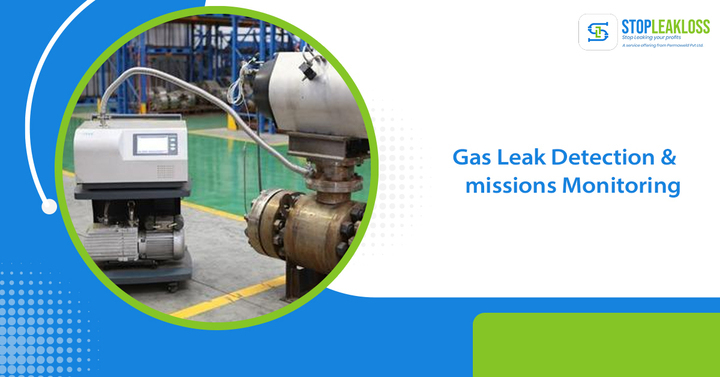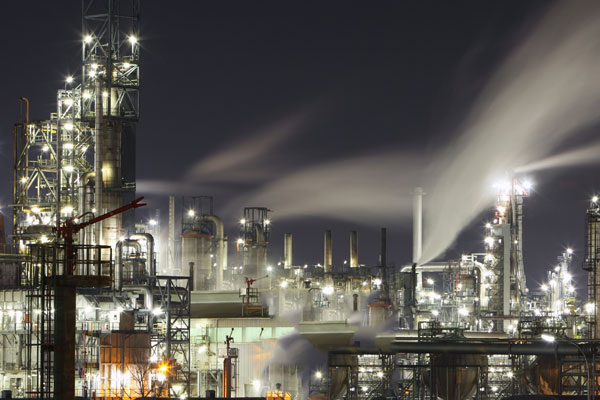
Gas Leak Detection & Emissions Monitoring
Pipeline leak detection- Harmful gas emissions are a result of ongoing industrial development. Emissions are frequently regulated. However, managing hazardous gases is a part of many processes. Faulty pipes and equipment result from lapses in preventative maintenance. The environment is being harmed by operational failure to identify gas leaks. Aside from damaging the air, such spills pose a risk to industrial personnel. As a result, even at low concentrations, inhaling can cause a variety of ailments and hasten death. Corrective procedures will not be possible unless gas leaks are detected early.
Real-time gas monitors can help you beat the clock for gas leaks. As a result, many gas sensors may be strategically positioned across any probable source for early gas leak identification. In addition, charting such gas leaks in these industrial zones might aid safety officials in taking prompt corrective action. Therefore, various data-driven environmental automation for industrial safety can be achieved by defining relevant criteria. (pipeline leak detection)
What is the Purpose of Pipeline Leak Detection?
Fugitive emission leaks are accountable for contributing to climate change and air pollution and representing a financial loss through lost commodities. While environmental degradation is undesirable, fugitive emissions might provide a more immediate hazard.
Organizations can benefit from routine leak inspection, pipeline leak detection, and repair because leaking pipelines and joints can result in material loss. As a result, small leaks can be found and fixed before they cause additional damage. Having a reliable leak detection system has several advantages, such as discovering leaks early on is typically less expensive to fix and reduces facility downtime, assisting in demonstrating compliance with emissions laws, and protecting the environment of your employees and neighbors. (pipeline leak detection)
What are Volatile Organic Compounds (VOCs)?
VOCs (volatile organic compounds) are a diverse group of naturally and synthetically produced substances. They’re called volatile because they release molecules into the air as they evaporate. VOCs are also incredibly valuable since they are used to make numerous synthetic products. VOCs are also used in pharmaceutical manufacture and make excellent transportation and heating fuel.
VOCs offer a long-term health danger to employees, with impacts spreading as far as the surrounding population. In addition, leaks enhance the risk of fire and explosion when substantial volumes of combustible liquids and gases are confined under pressure.
Gas and Pipeline Leak Detection
The micro-electromechanical (MEMS) transducer is used in the Molecular Property Spectrometer (MPS). The transducer can detect changes in the thermal characteristics of the air and gases surrounding it. This gas leak detector’s output measurement contains environmental data to determine the kind and concentration of gases in the immediate area. It can detect up to twelve gases, including gas, with great accuracy. (pipeline leak detection)
When detecting gas leaks, the MPS sensor can beat catalytic and non-dispersive infrared sensors. It has several advantages.
- The MPS sensor does not require calibration. It can provide consistent, dependable results for up to a year. Other gas sensors require far more regular calibration or, at the very least, bump testing.
- MPS sensors, unlike catalytic sensors, are not poisoned when exposed to any concentration of flammable gas. In addition, these sensors do not wander or degrade over time, delivering consistent findings. MPS sensors are also fail-safe and self-diagnostic. This feature guarantees that the user is notified of any damaged or malfunctioning equipment before using the sensor in a potentially dangerous situation. (pipeline leak detection)
- When drastic or quick changes in ambient conditions, catalytic and NDIR sensors can become unreliable, and inaccurate measurements can come from this temperature, pressure, and humidity fluctuations. In contrast, the MPS sensor can dependably detect the presence of gas in a range of environments. For example, the sensor will provide an accurate measurement in temperatures ranging from -40°C to 75°C, and relative humidity levels ranging from 0% to 100%.
- Cost: NDIR sensors are more expensive than catalytic sensors since they are patented technology. On the other hand, both types of sensors have a far greater total cost of ownership than many customers expect. Because they need to be calibrated and replaced frequently, the overall cost during the detector’s lifespan is significant. MPS sensors are low-cost and need little calibration, resulting in long-term cost reductions. MPS gas detectors are also extremely long-lasting, with an average life expectancy of more than five years.
- Easy to Use: With older gas detectors, it’s difficult to tell if you’re obtaining an accurate reading due to regular calibration requirements and their restrictions. Gas detectors equipped with the MPS sensor are simple to operate. They also offer an easy-to-use interface that gives workers the information they need when gas is present in unsafe proportions. (pipeline leak detection)
Leak Detection in the Future
Over the previous few decades, particularly in the last ten years, the gas business has risen exponentially. Natural and Artificial gas production is expected to increase in the future decades as it is a generally safe fossil fuel. However, don’t be fooled by this gas’s reputation for being “reasonably harmless.” When gas is present in large quantities or under conditions that allow it to ignite, it is still a very deadly gas. Therefore, companies cannot afford to be sloppy when identifying gas leaks.
It is critical to identify gas leaks early and accurately for quick reactions. The MPS sensor is the most up-to-date technology for detecting a wide range of dangerous gases. As a result, it is a very operative tool for safeguarding your workplace. (pipeline leak detection)
The industry may monitor the environmental performance, improve occupational health, and minimize possible dangers for maximum safety by deploying real-time gas leak detection. Early detection of gas leaks can also alert concerned engineers, allowing them to prevent the spread of the leak and maintain a safe atmosphere for improved health and safety.



